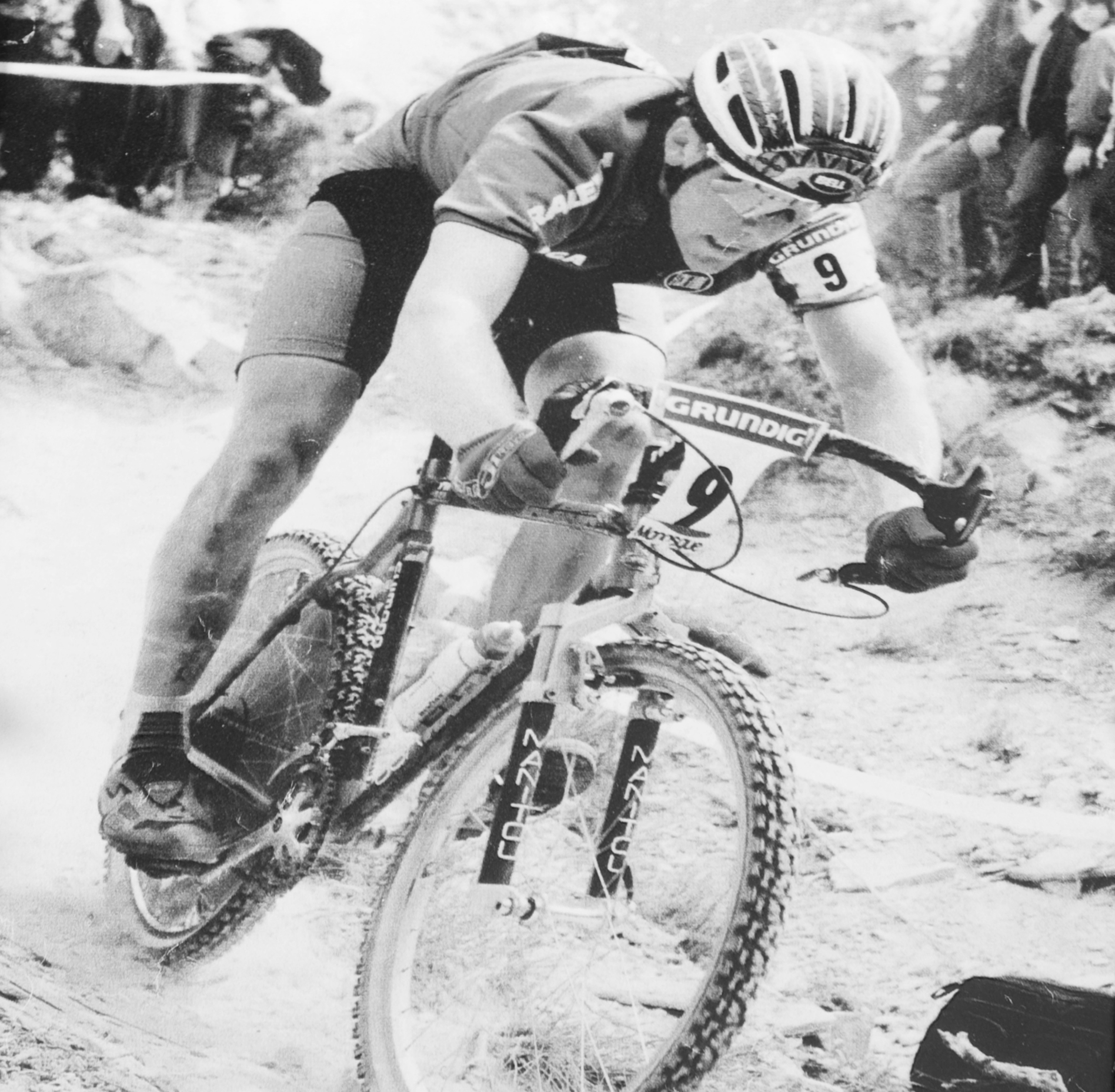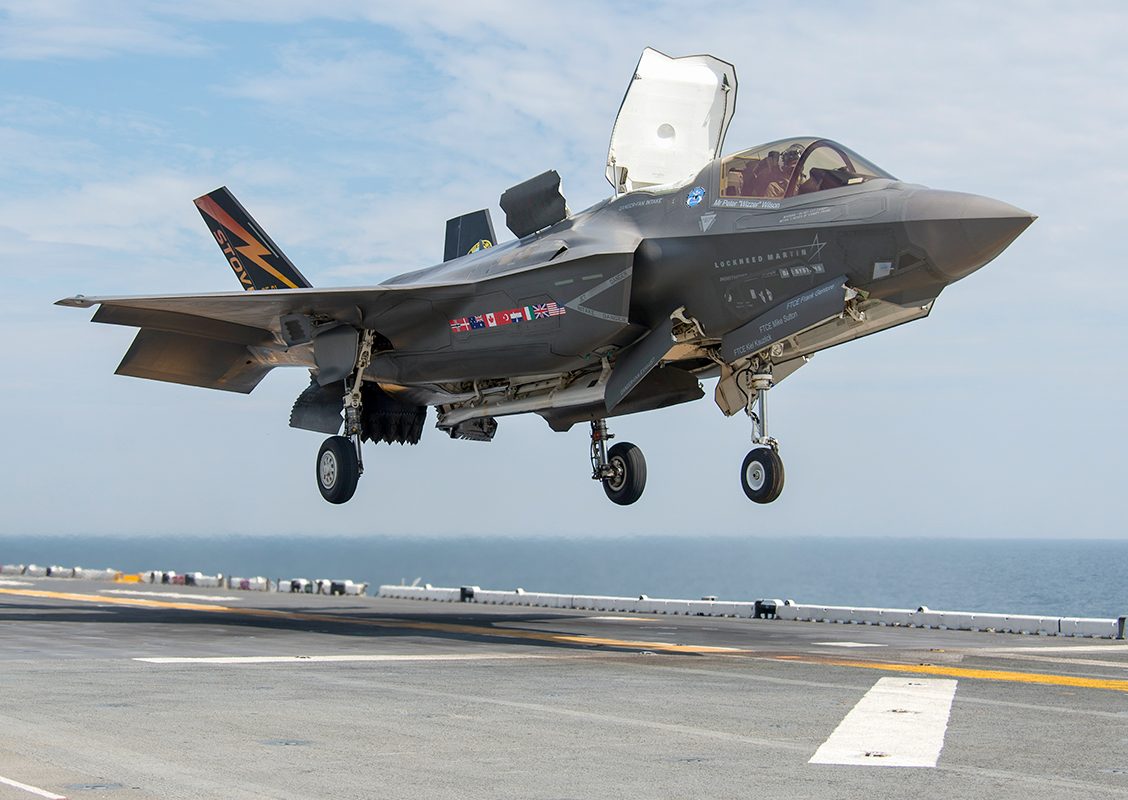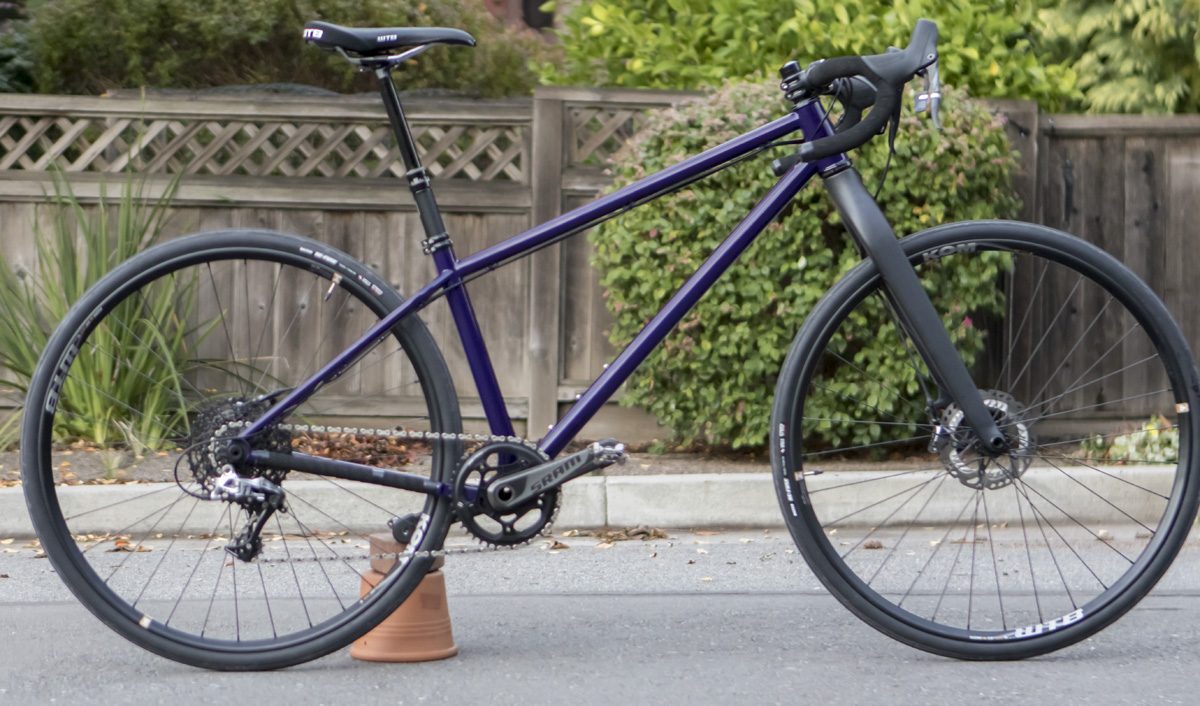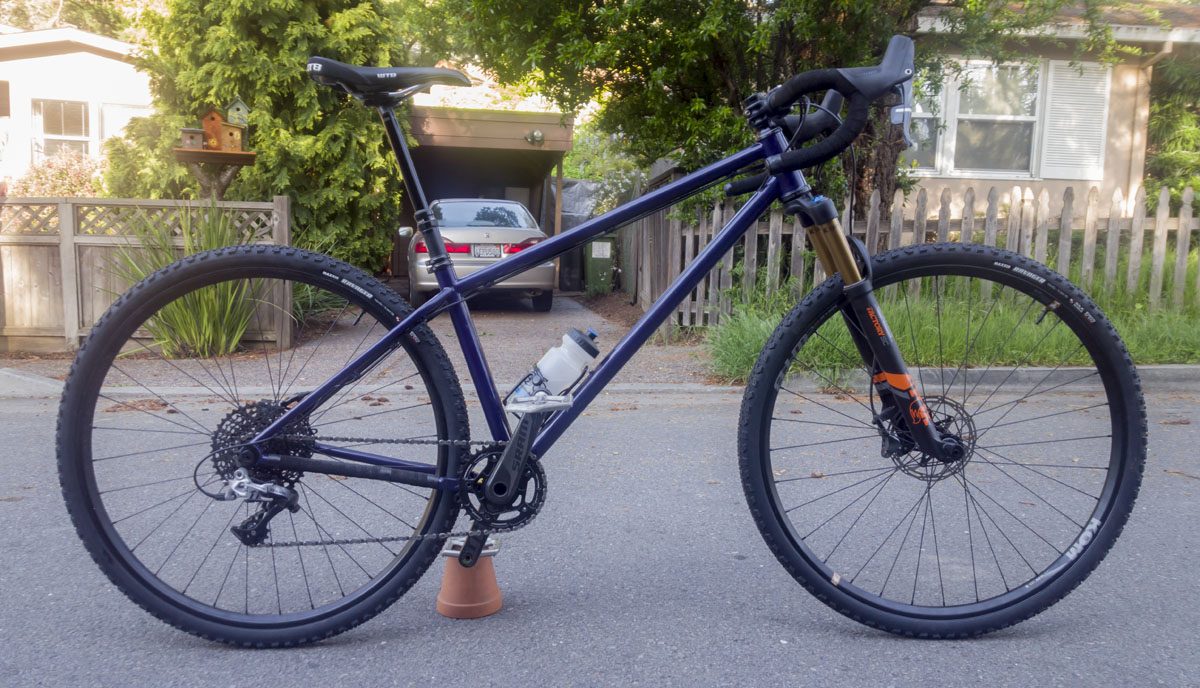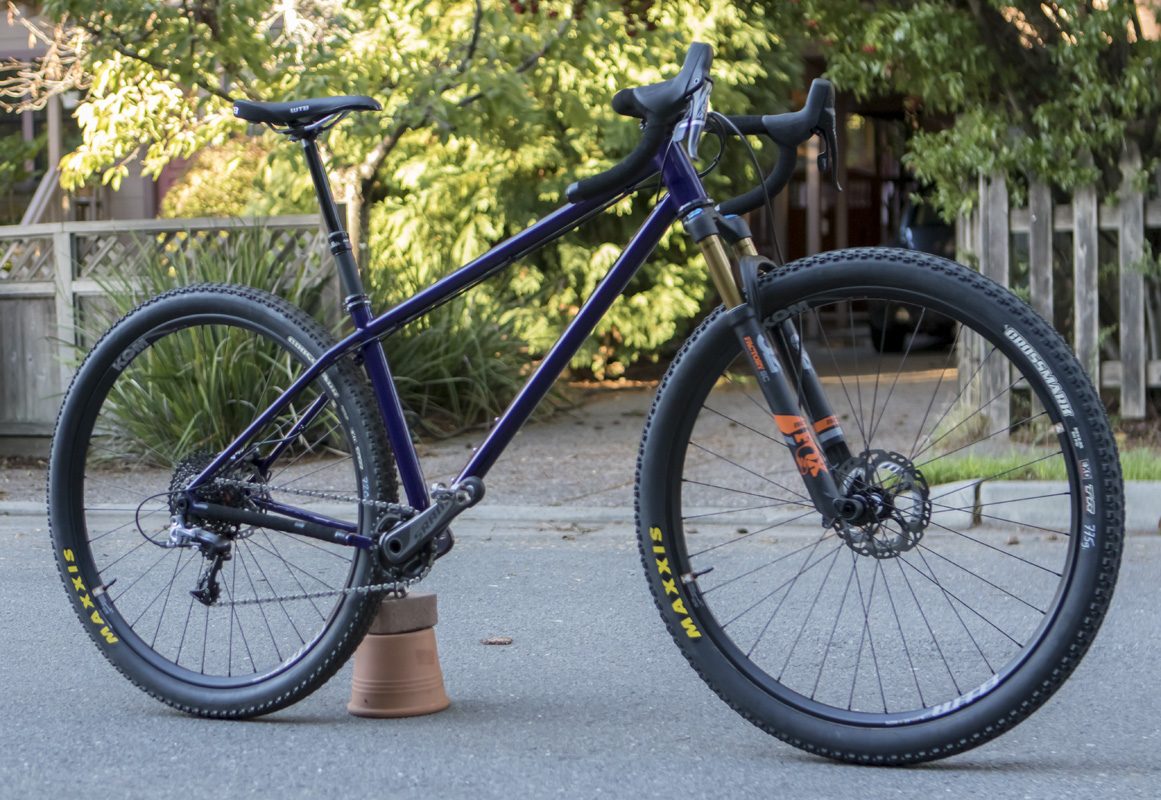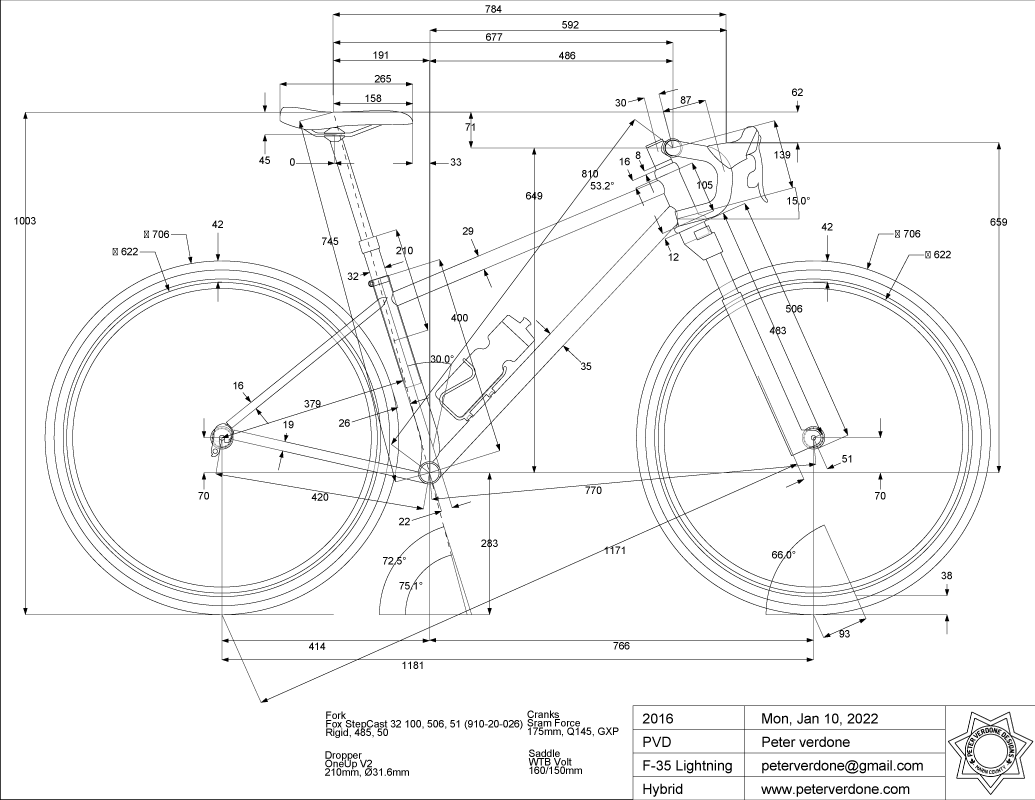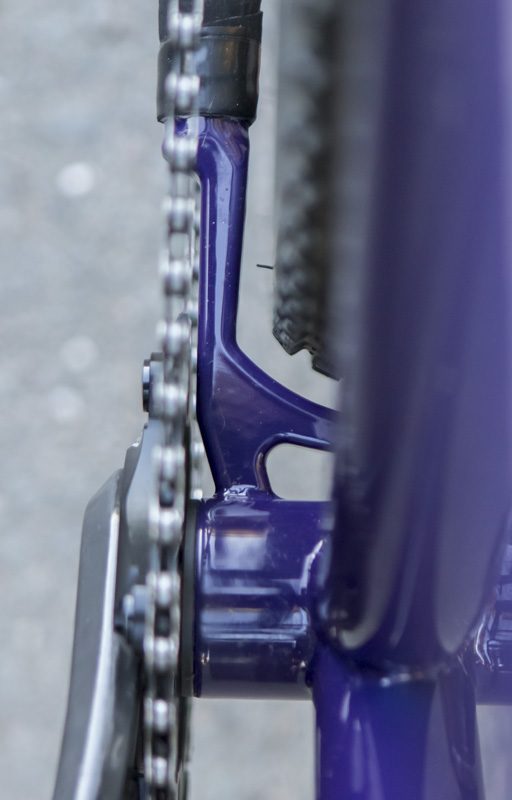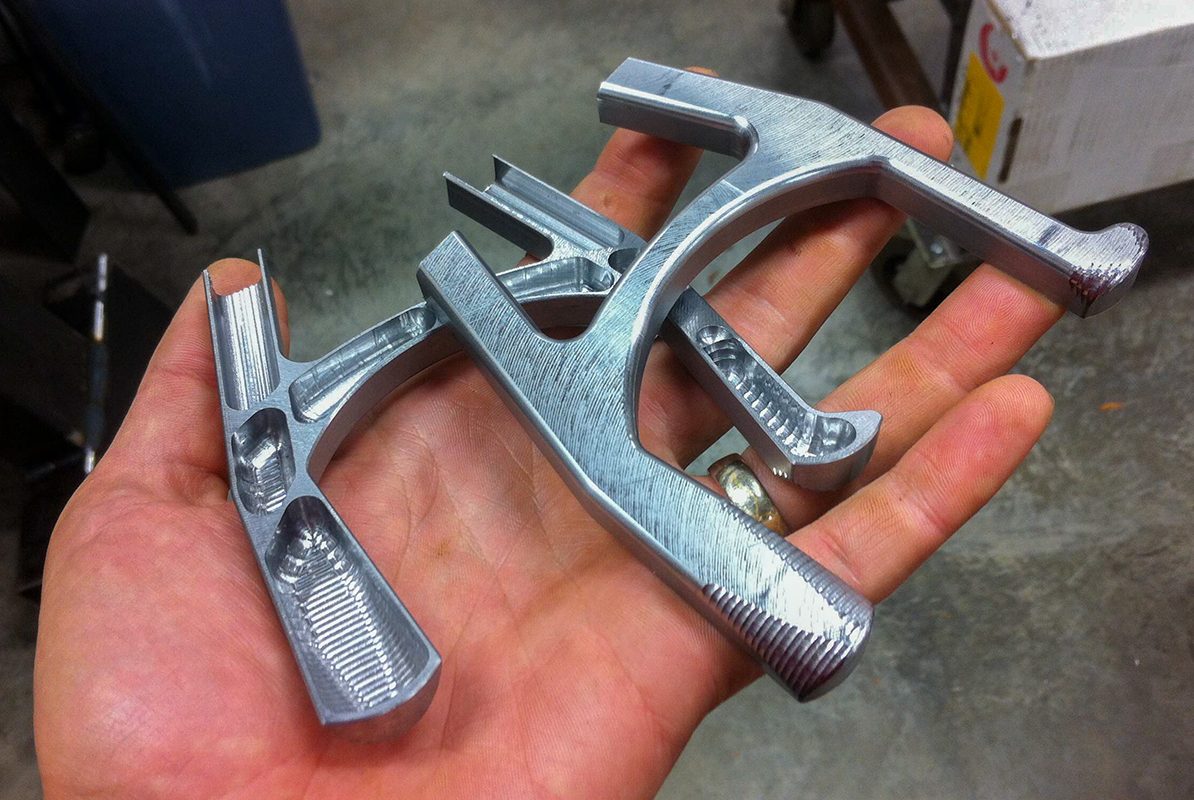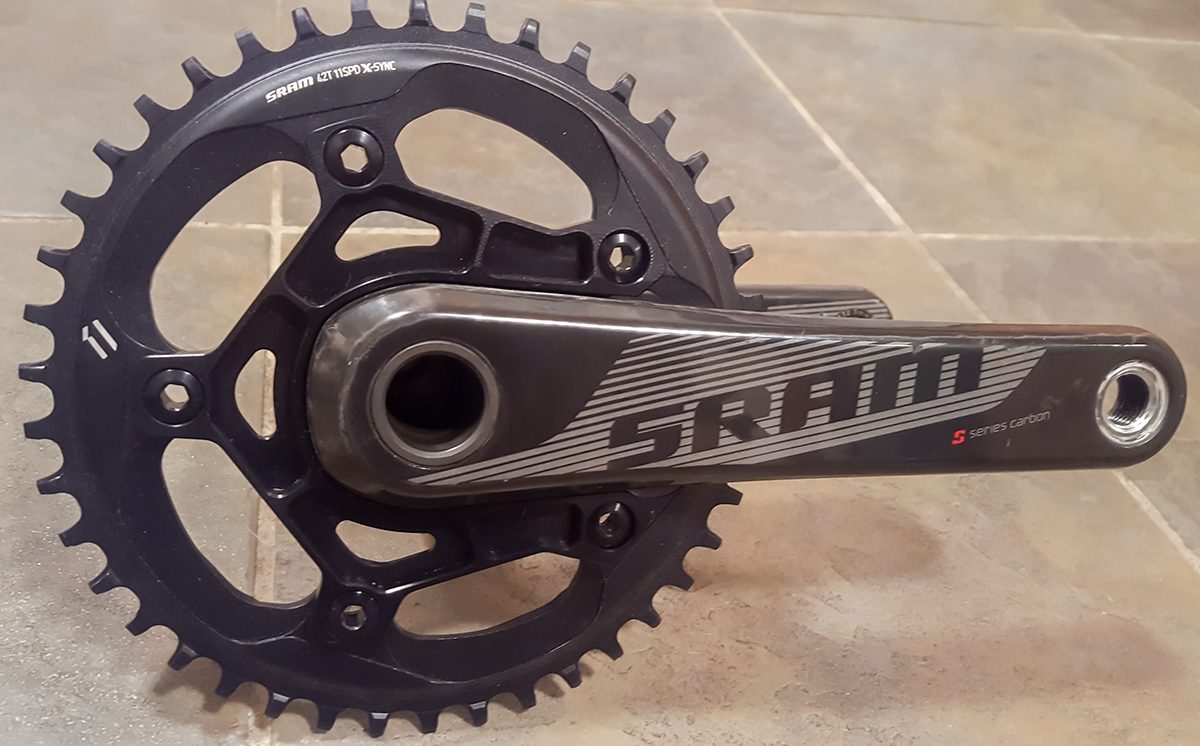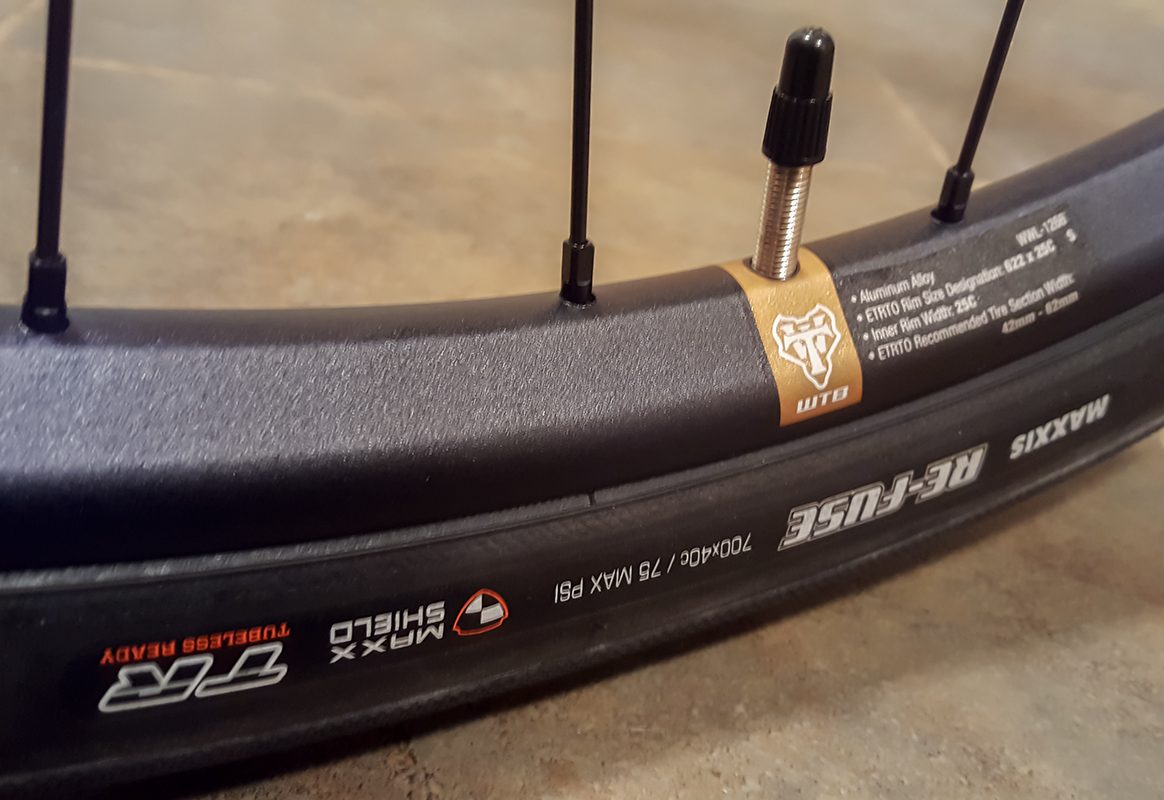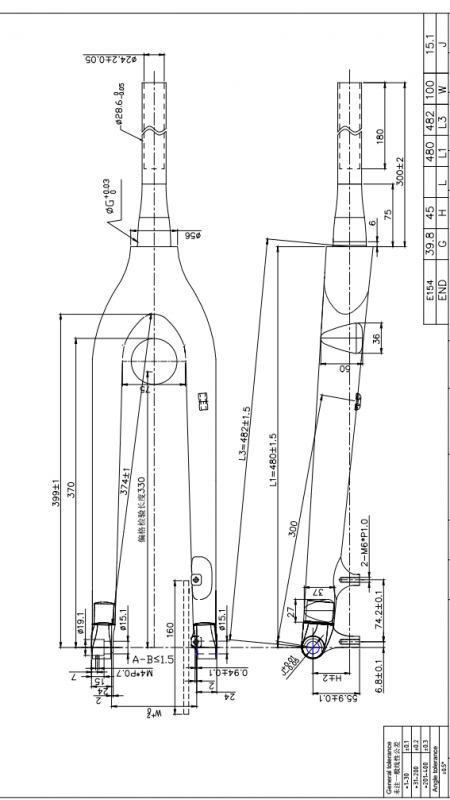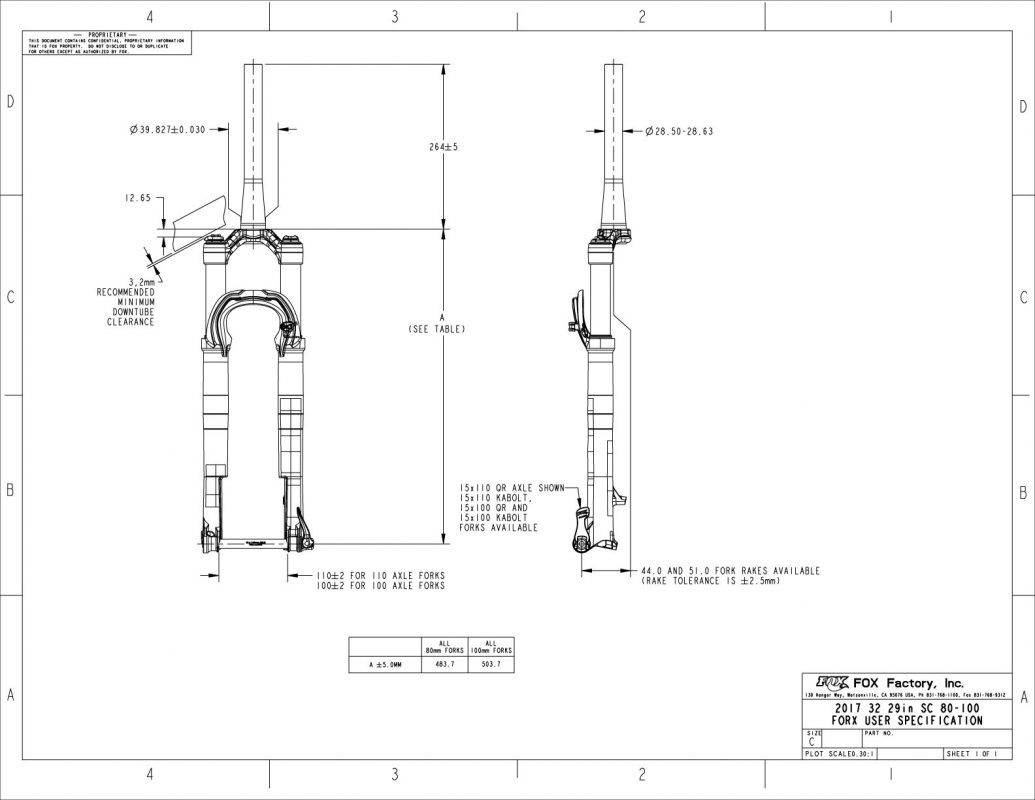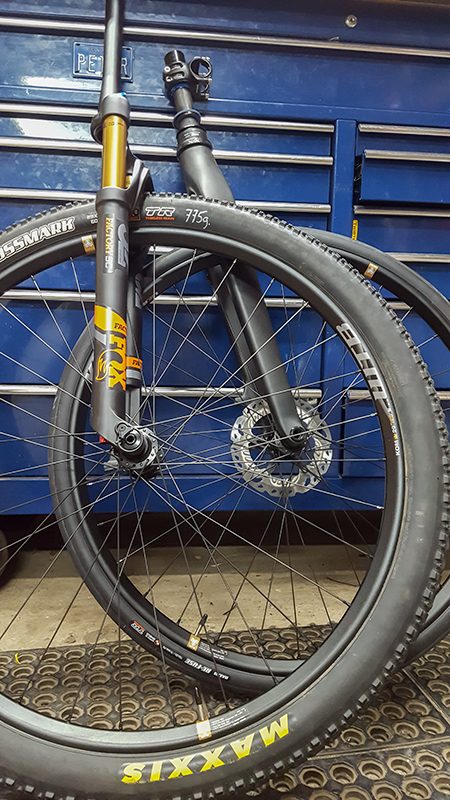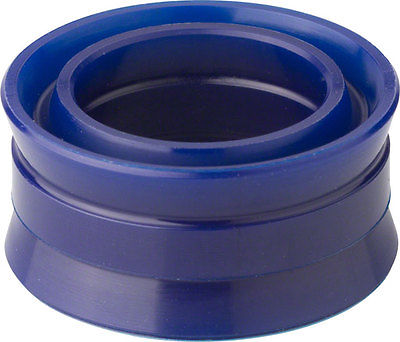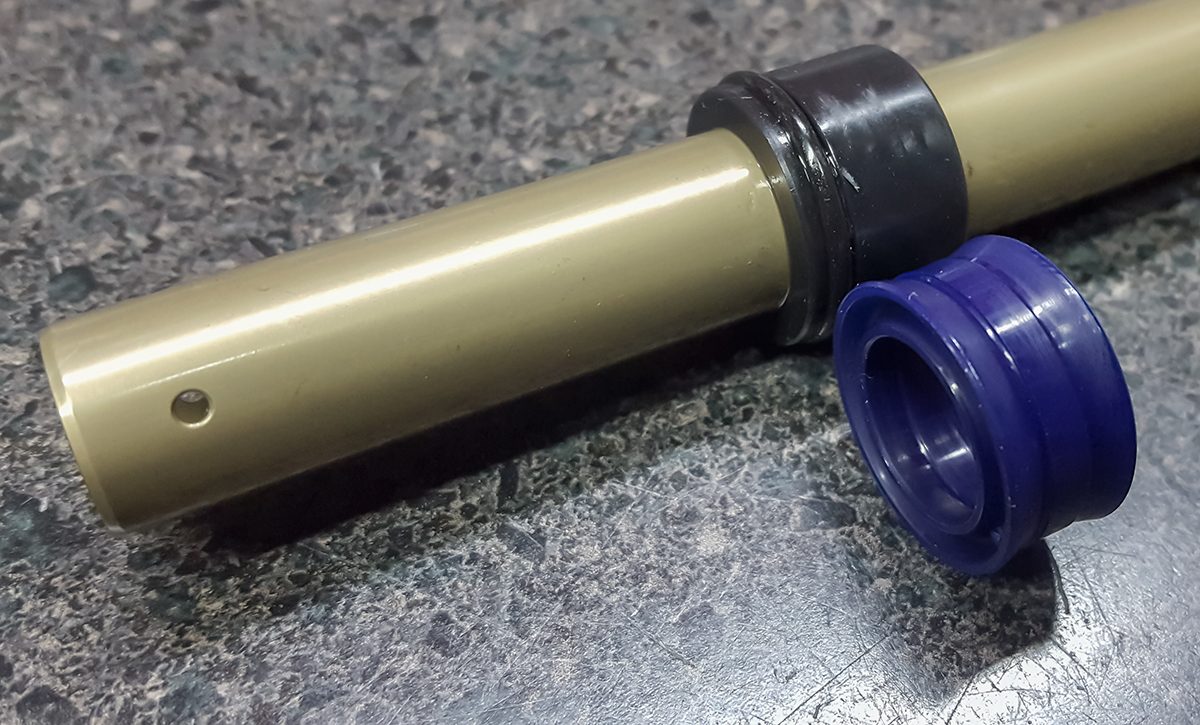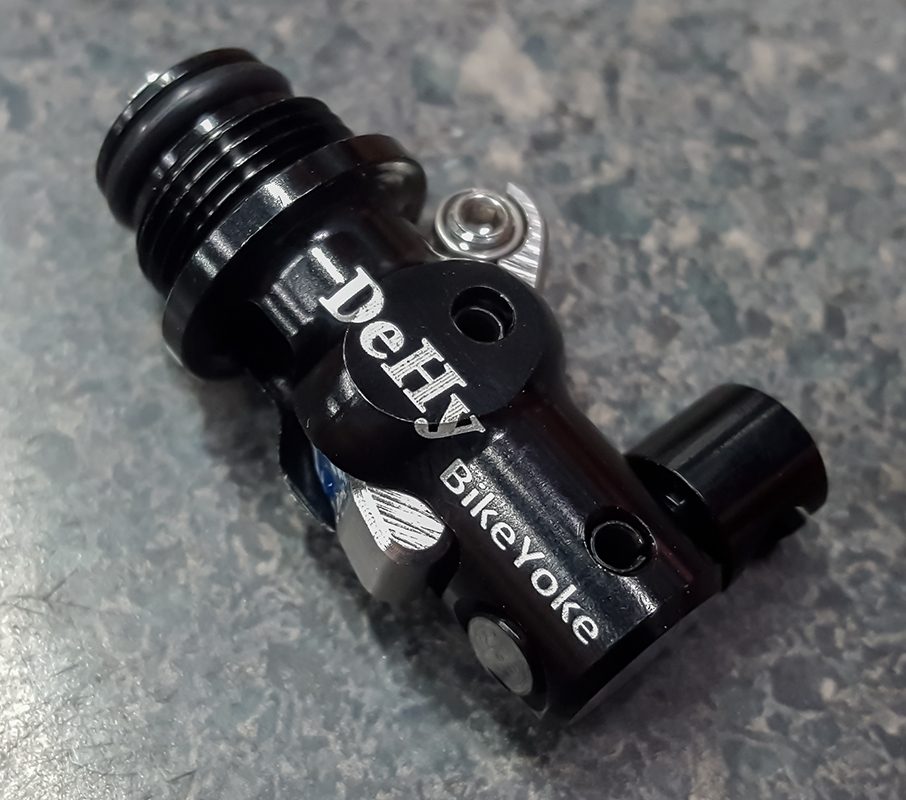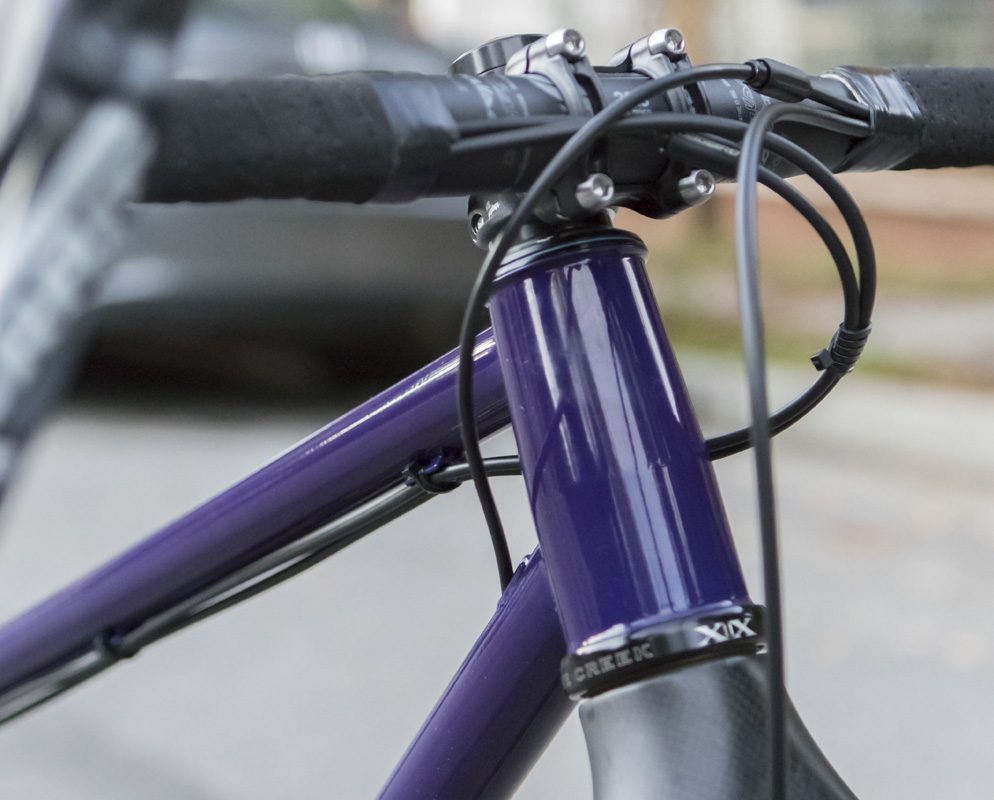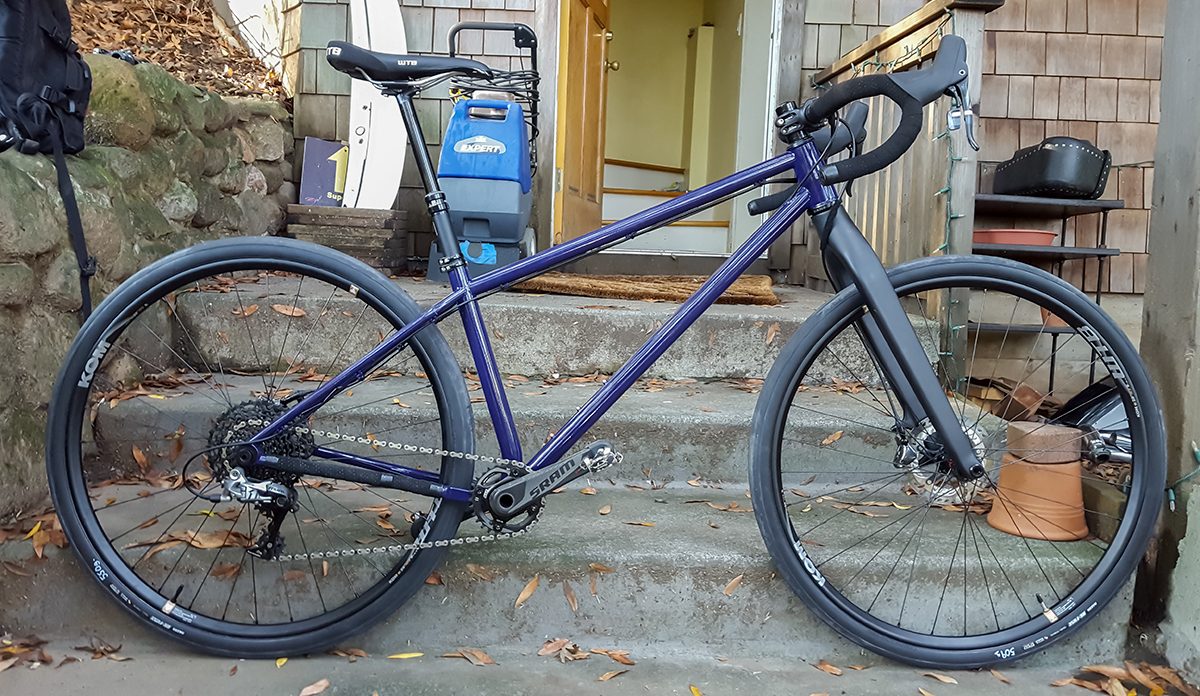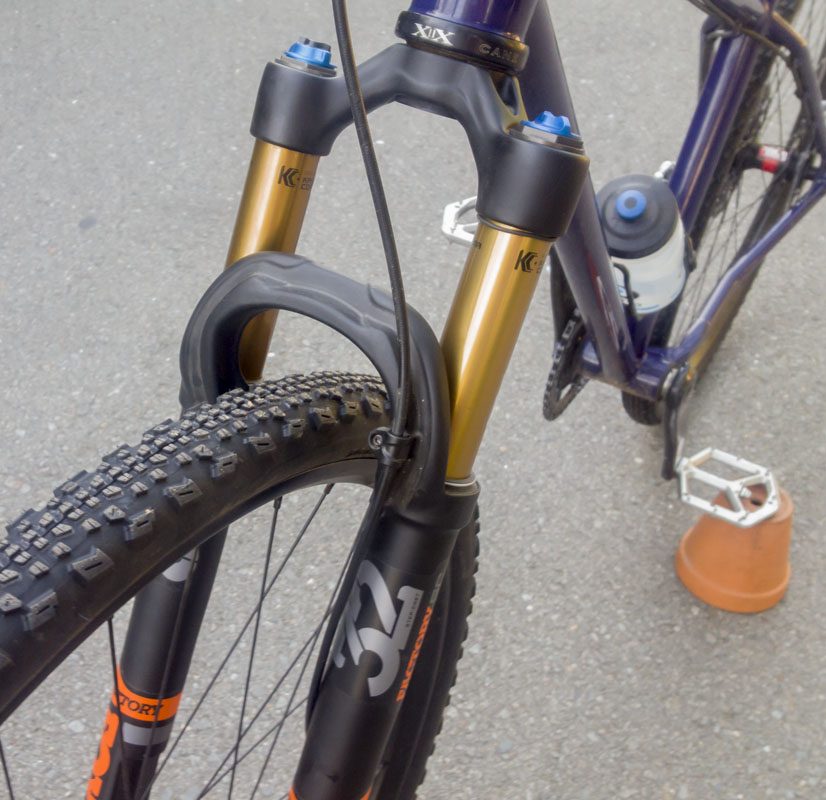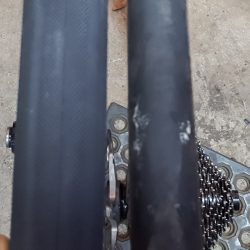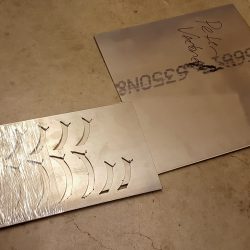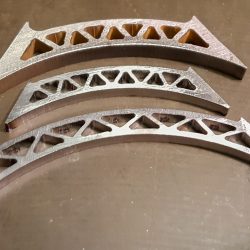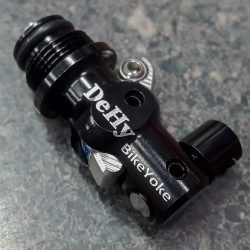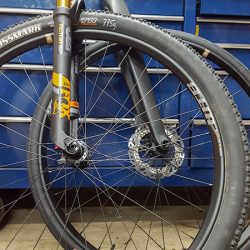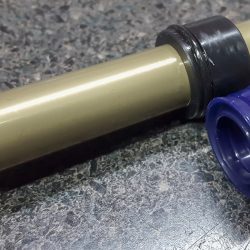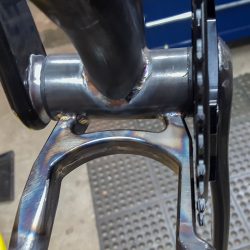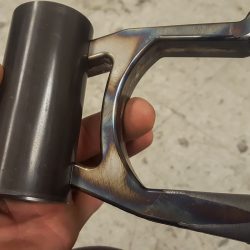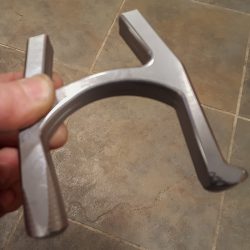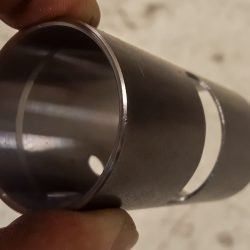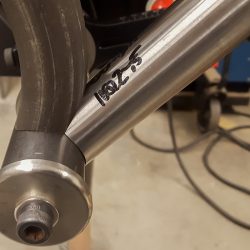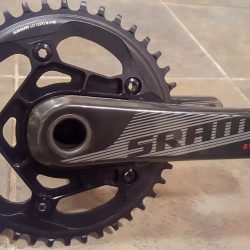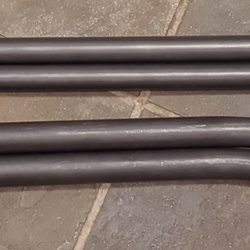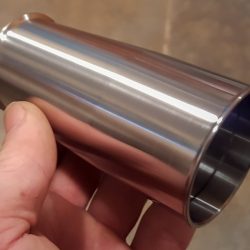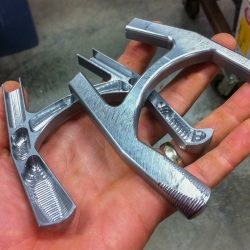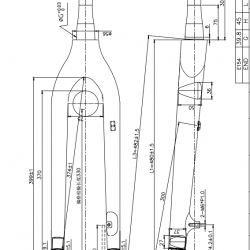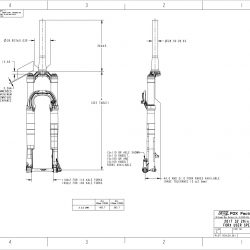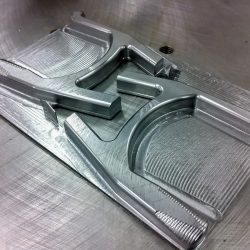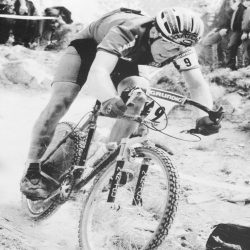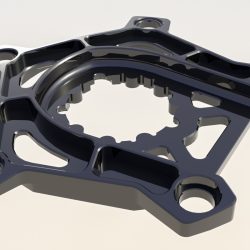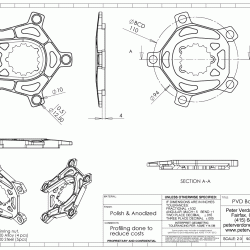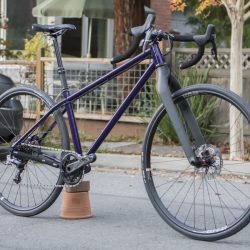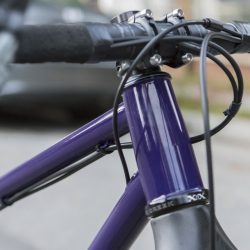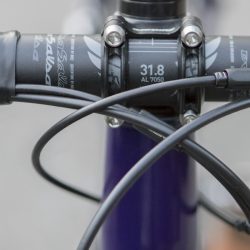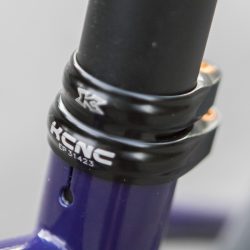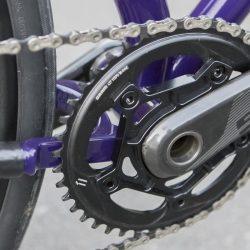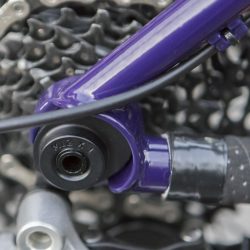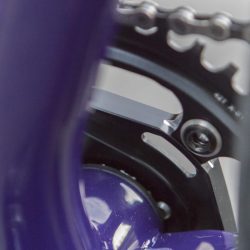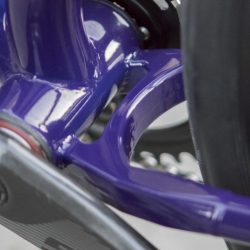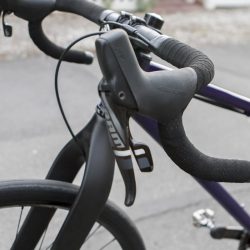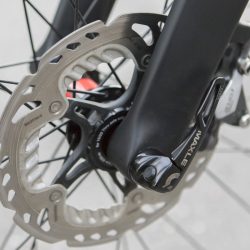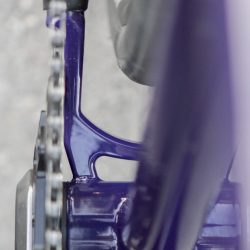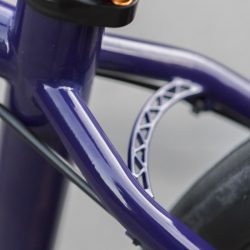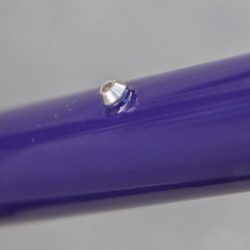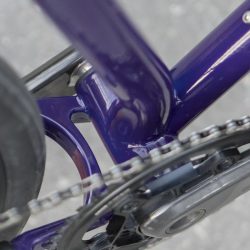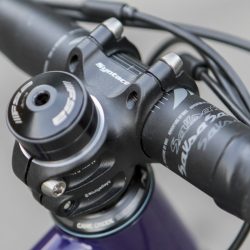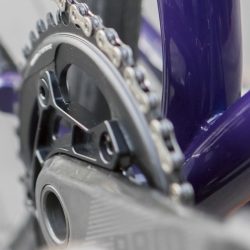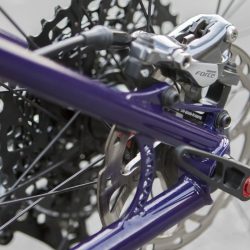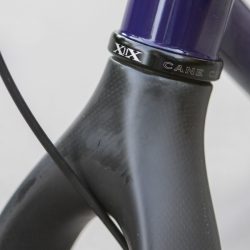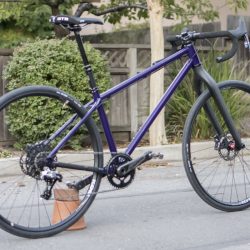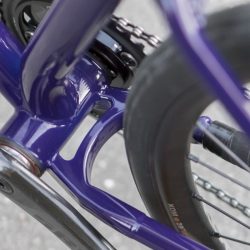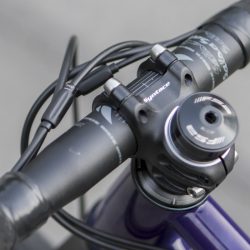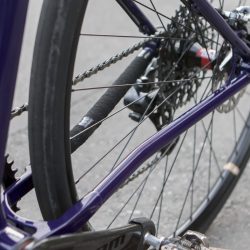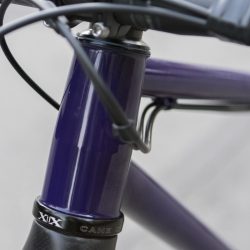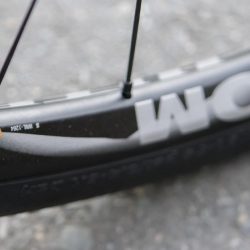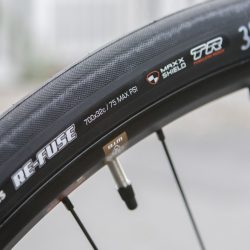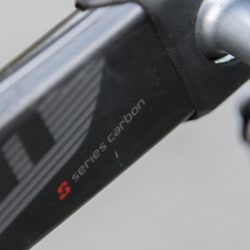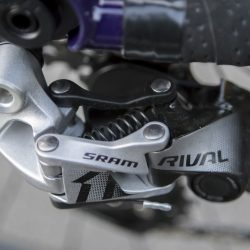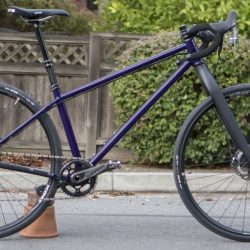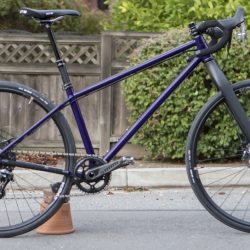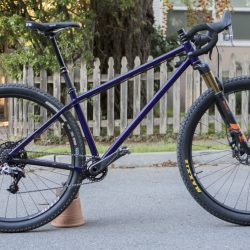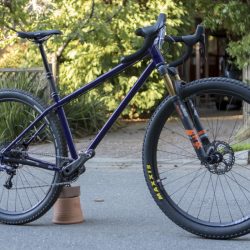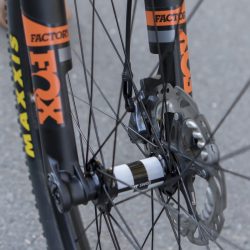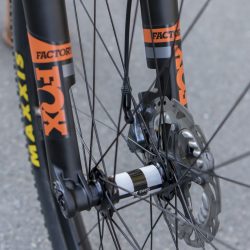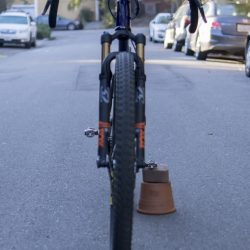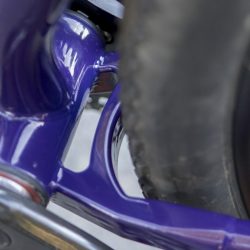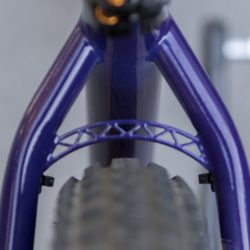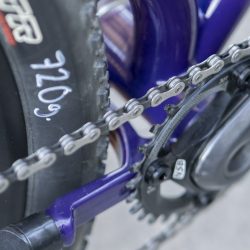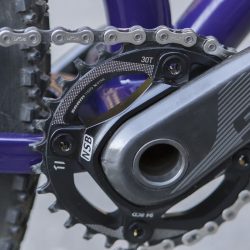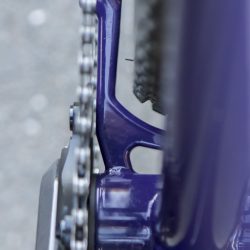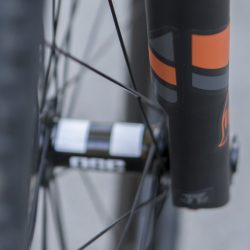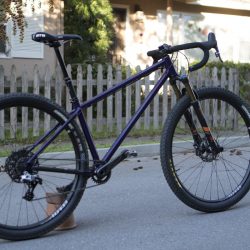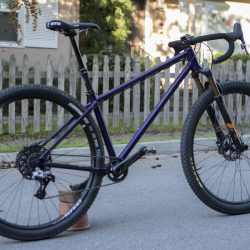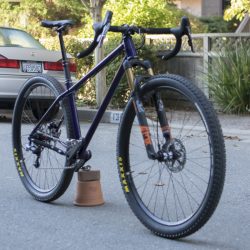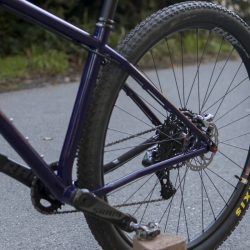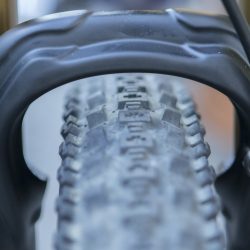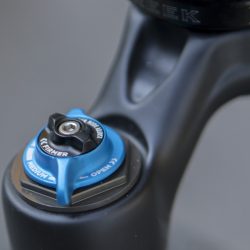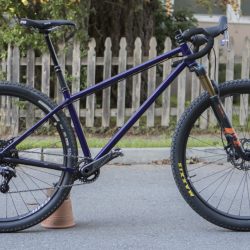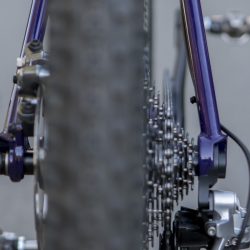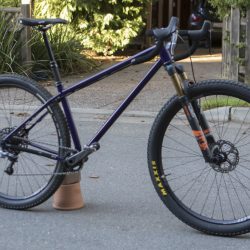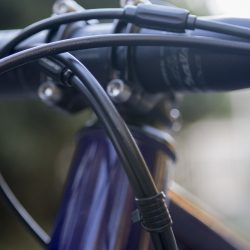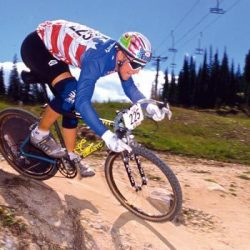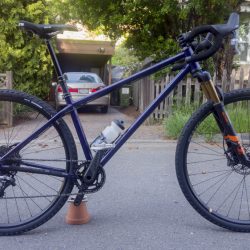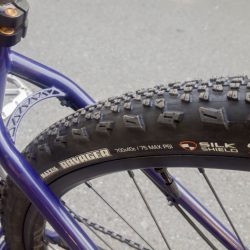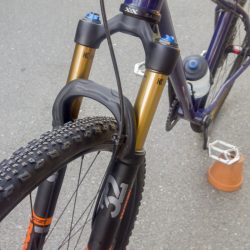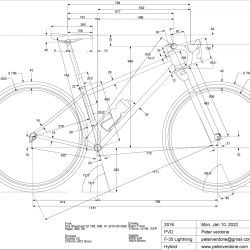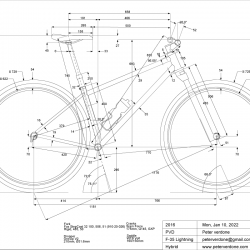(JT shown here on a Raleigh MTi1000)
I’m excited to post this bike just as the Philadelphia Bike Expo takes place. Certainly, this is becoming the coolest event to attend in the US for the custom bike crowd. I thought that I’d be able to attend this year but that didn’t happen. I’ve just been too busy and cash poor from building a bunch of bikes. Hopefully, I’ll be there next year. Why can’t NAHBS ever go to the northeast? Isn’t that where the market is?
Sometimes we need a bike that is in between. It’s not a mountain bike. It’s not a road bike. It does nothing very well but it does what other bikes can’t or won’t do well. They are hybrids. Often referred to in very niche categories like cyclocross bike, gravel grinder, adventure bike, drop bar dirt… they all do the same thing, mix up various properties of the mountain bike and road bike to perform a special task better. They do nothing well. Hybrids.
Back in the early 1990s, John Tomac was racing a Yeti C-26 and a Raleigh MTi1000 with drop bars and a tension disc wheel in the back for XC and DH. Yes, both races on the same bike back then. I was lucky enough to see (and hear) this in action at the early Mount Snow Grundig races. Tomac was completely dominating XC and DH in the USA at the time. We would be standing in the woods, waiting for riders to come through each lap, the ground would start rumbling, we’d know that Tomac was on the way long before he was in sight. The drum beat of the Tioga Tension Disc wheel would echo down the mountain. It would get closer and louder and closer and then you’d see John fly by. After a while, others would pass by. It was rarely a close race. John Tomac was so dominant he could race a hybrid and win.
My new hybrid bike is named after the F-35B Lightning II JSF. It’s a serious piece of modern military hardware capable of a host of jobs for all branches of the US and UK services. It’s such an insane jet. It’s designed to be reconfigured for every mission and serve several rolls in service. It’s a hybrid and it kicks ass.
- Joint Strike Fighter
- STOVL
- Supersonic
- Fighter/Bomber
- Mad troof
With the proliferation of hydraulic drop bar levers and tire development associated with the clearance that disc brakes provide, more options have become available to the bike designer. Drop bars have gotten wider just like mountain bars have. Single chainring drive trains allow a lot more room for tires (albeit at the expense of gear range). Dropper posts allow powerful riding positions without being dangerous going downhill. We have available so much more to work with today that change what we can imagine will work well. It is exciting.
Forward geometry, while becoming more noticeable in the mountain bike world, is non-existent in the world of drop bars. Granted, it’s a lot harder to do. Drop bars mount to the stem far closer to the saddle than flat bars will. I designed the fit of this bike to take advantage of forward geometry and the use of drop bars. This allows me to still use well placed flat bars, just not in a way I would on a real mountain bike. The geometry of this bike will seem strange to the drop bar crowd because just about every drop bar bike I’ve ever seen wasn’t actually designed to be used in the dirt from a geometry standpoint. Just adding tire clearance is not the same as having a properly designed off road machine.
The geometry of this bike is a bit wild for a drop bar bike and that’s a good thing. I’m going to learn a lot on this bike. We learn nothing by doing the same silly things over and over. Riding road with a dropper post puts the pilot in more of a motorcycle body set than traditional techniques. The downhill cornering speed is so much faster and more aggressive. In dirt, Sub-750mm front center bikes are really a joke. Keeping this bike long means speed in the dirt. It’s balanced, though, as weight is forward.
The frame’s rear allows for tires up to 700x57mm knobbies. The front will clear a 63mm knobby. This gives a huge range of tire options for days of tarmac to singletrack mountain passes at speed.
To get the massive tire clearance that I have with Q145 road cranks, I had to make my own PVD BoostR spider to fix the chainline problem that exists on most skinny 1x bikes. This is really what makes this bike special, ROAD CRANKS! Other 1x spiders have a 45.5mm chainline unlike mountain bikes that come with 49mm chainlines (in 135/142). Moving that out to 49mm and the special yokes give room for a 2.25″ mountain bike tire. This is seriously cool.
By building with a ZS44/EC49, I’m able to use a Cane Creek Angleset to change front end geometry on the bike as needed. Something that is very valuable as I develop geometry for new bikes.
Wide rims have been drifting over to road for a while. Internal 25mm rim widths are here now. Interesting, eh? The introduction of the Enve SES 4.5 AR Disc rim got me willing to try. I can’t afford those rims, and the aerodynamic shape that helps them, but I did lace up some WTB KOM 29″ i25 rims with the intent to use them on road. They are about the same weight as the Enves. Already, tire choice is the issue as narrow rim profile tires don’t work. Standard tires that were designed for narrow rims expose a lot of side wall to the ground. I went with the Maxxis Re-Fuse 700x32mm and Refuse 700x40mm tires for tarmac and gravel situations. The 32mm tire measures 35mm on the i25 rim. The 40mm tire measures true.
The front of the bike can be run with a cheap rigid 480mm carbon fork or a 100mm suspension fork. Certainly, I would like a more compliant fork for using real road tires on this bike but that is a project for another time. For now, a light and crisp option exists to complement the bare minimum of suspension travel in dirt. I’ve essentially sworn off any fork under 14omm of travel for off-road use but this bike (of course) presented a compromise.
The Fox Step-Cast 32mm fork is without dispute the choice for a bike like this. It’s light. It’s got a narrow stance. The 110×15 axle allows a very strong wheel. While I am a fan of RockShox products, the Fox products are starting to compete in performance and price. This is all good stuff. I’d just like to see a SID version of this design.
The bike was designed to have the ability to use a 170mm (or 200mm) dropper post. My real mountain bikes are using all the 170mm posts that I have so I used an older Rockshocks Reverb Stealth A2 150mm post (since updated to B1 170mm) with a Bike Yoke DeHy cable conversion to work with the drop bar shift lever for actuation. The Reverb has been updated with the new B1 style IFP (11.6818.034.000). It’s backwards compatible and a must for any A1 or A2 rebuild as IFP blowby is one of the main failure modes of a Reverb.
To most paying attention, I’ve got a few things going on with my dropper actuation. The lever to control the dropper is the left side SRAM Force HydroR lever. It was modified to do this, shown HERE. Another issue, controlling the hydraulically actuated Reverb with cable. For that, the BikeYoke DeHy is used. It’s a really well done little part that makes it possible to keep the high end Reverb and the odd control from the drop bars.
I chose the Salsa Cowbell 2 handlebar in 46cm for this. I would love a 48cm or 50mm version of this but this is as wide as they came. They have a slight flair but nothing overly fredly. Just enough to clear the bar top in the drops. Positioning the levers was a challenge as there was only one spot on the bars where they would land right.
Color: #5022. Night Blue. The clear coat on this particular color makes it look more purple than blue. The folks at the powder coating shop called me in to inspect the change it would produce. I gave them the go-ahead to shoot the clear. It’s a nice purple.
Honestly, during the entire design and construction of this, the first in a series of narrow gauge dirt bikes, I kept asking myself what the perfect bike for Mike Solis would be. Mike is a local legend in the Bay Area. In the past few years, he’s done several million foot climb years primarily on dirt. He’ll do 10k foot rides and 200km dirt slogs. While this bike doesn’t have the gearing range he needs, it has most of the other properties. Thanks for the inspiration Mike!
Special thanks:
Drew Guldalian @ Engin Cycles for stay bending and moral support
Devin Bodony @ Lichen Bikes for yoke and spider machining
Hinmaton Hisler @ Loco Machine for the custom head tube
Mark Norstad @ Paragon Machine Works for dropouts, bb shell, and braze-ons
Lon Kennedy @ Nova Cycles Supply for top and down tubes.
Test ride 1:
Setup with full size MTB tires and suspension fork on trails and singletrack at China Camp. 30t chainring.
I was stoked to get out and shake the bike down on real trail. The way the bike rode with the narrow drop bars left me underwhelmed. The weight of the front fork and wheel totally overwhelmed the bars. Wider drop bars are really needed but there really arn’t any quality drop bars made in 48 or 50cm models. The bike could be ridden hard in the rough but it was just not fun at all compared to what a mountain bike could do. Changing hand position constantly throughout the ride on tight trail was tricky and left me hesitant. It’s nice that the bike can be setup for really rough conditions but when you’re used to full boat enduro bikes and cutting edge hardtails, this is nothing but a space holder.
I raised the handlebars 5mm during this ride to get a little more comfort as I was in the drops in rough so much.
Test ride 2:
Setup with rigid fork and 40mm Maxxis Re-Fuse tires. 30t chainring. Riding mostly fire road and double track on Tam with some peppering of singletrack.
The bike really came alive for this ride. The lighter front end and lighter rear wheel changed everything. The Re-fuse tires are completely amazing. They offered so much grip and cush that the bike was just a joy over all fire road conditions, even the top of Eldridge. Racing the bike hard down Coastal View at speed I rode the edge of traction. I crashed pretty hard in one loose corner but that was just me finding the edge and crossing it.
Descending fire road is just a dream with the drop bars. The riding position is so aggressive and balanced in the drops and the seat down. It’s really something else.
Coming down Harry Allen Trail (a tight steep singletrack) into Pheonix Lake, it was obvious that the real limit for how the bike can be ridden is the drop bars. The tires are a compromise but the bars turn into the real deal killer.
Rolling home on the road from Ross was so nice on the smooth tires. The 30/10 gearing was just about functional at low speeds on the flat road sections. A 32 or 34 tooth ring would be better if longer times were spent on road but that would come at the expense of the great climbing on dirt that the bike has now.
I raised the handlebars 5mm again on this ride. I’m just old. The constant use of such an aggressive riding position and the pounding that the rigid fork was giving me just add up. The balance in the drops is coming together. Riding in the tops would be nicer I could find some good wide wing bars.
Commuting, Ride 3 & 4:
Wednesday on the 40mm tires and a 42t chainring. Thursday on 35mm tires and a 38t chainring.
San Francisco is a crazy place to commute. The climbs are very steep, the decents are insane, and the flat sections on Great Highway or along the park are long and flat as hell. My Thursday setup was a lot better for the bike and the commute. I had use a 42t with the 10-42 cassette in the past but I don’t think I put enough time into thinking about the gearing. The 38t works a lot better but this may have to do with me being more out of shape. The 38-10 gets me ramped into a decent well enough while the 38-42 gets me up paved hills far easier and allows for more transition into dirt. It’s the right setup for now.
Ride 5:
Same setup as the last off road ride but with the suspension fork. Tamarancho.
Riding rigid forks aggressively take a huge toll on me as I’m not a young man anymore. I pulled all of the volume spacers out of the fork (came with two) as I figured it wouldn’t get pushed as hard as it would in a flat bar/big tire configuration. I was half right. I should have kept just one of the spacers in place.
The bike was working pretty good in this configuration. It was a pretty good balance for the limits that drop bars place on the bike and keeping it usable on the trail.
We were working on one particular shot on the cellphone when things went a bit wrong.
The front wheel projection that the forward geometry is based on took a while to get used to visually. The minute the bike is pedaled up or sped down a hill that sense disappears as the wheel is actually in the right position compared to similar bikes. One thing is for sure, if you are pushing a bike hard, forward geometry is the only choice.
I’d like to try the bike with a set of Maxxis Ravager or Rambler tires. During ride #2, I was really slaming the tires around on rock and dirt road irregularities. A couple times I smashed into bare rim and didn’t flat. They took such an amazing amount of abuse, flowed over the dirt, and kept me going. Adding some light knobs would just help in the big picture.
POST (4/2017): The bike in mid range form with suspension and the 40c Ravager tires:

